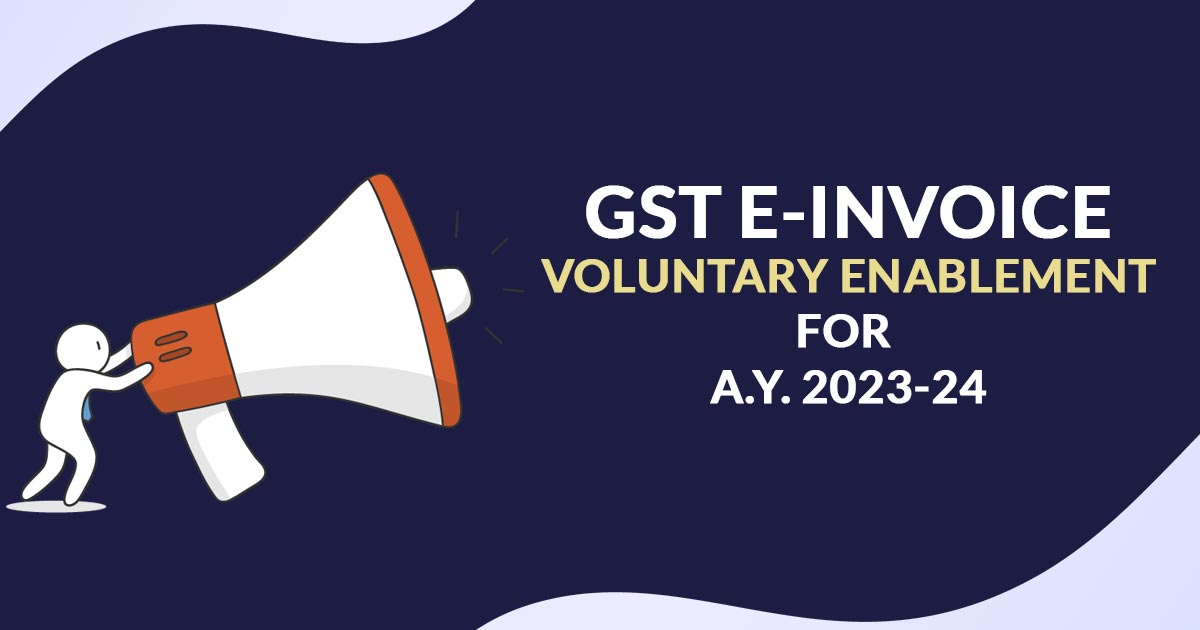
‘E-Invoice Voluntary Enablement’ has been enabled by The Goods and Services Tax (GST) E-invoice system for the financial year 2022-23.
Using the e-invoice system, individuals who are GST registered can upload all B2B invoices to the Invoice Registration Portal (IRP). IRP generates an individual’s Invoice Reference Number (IRN), digitally signed e-invoice, and QR code.
The GST e-invoice system is arranged to undertake a crucial change in a few weeks after the latest improvements in IRPs.
An electronic invoicing system was introduced by the GST Council at its 35th meeting. Large businesses were selected for the system. Later, small and medium-sized businesses were also included.
A notice no. 78/2020- Central Tax, has been issued recently. For any outbound deliveries with an AATO of more than 5 Crores, the taxpayers are now required to include 6-digit HSN Codes.
Taxpayers must act in accordance with e-invoicing that begins from FY 2022-23 if their limit of e-invoice is more than the specified turnover in FY from 2017-18 through 2021-22.
Furthermore, the aggregated income in India will consist of the entire turnover of all GSTINs that come under a single PAN.
Generating e-invoice has advantages: the tax authorities will be allowed to access real-time transactions because the GST portal will generate e-invoices imperatively. Also, the chances of manipulating invoices are less as they will be generated before performing a transaction.